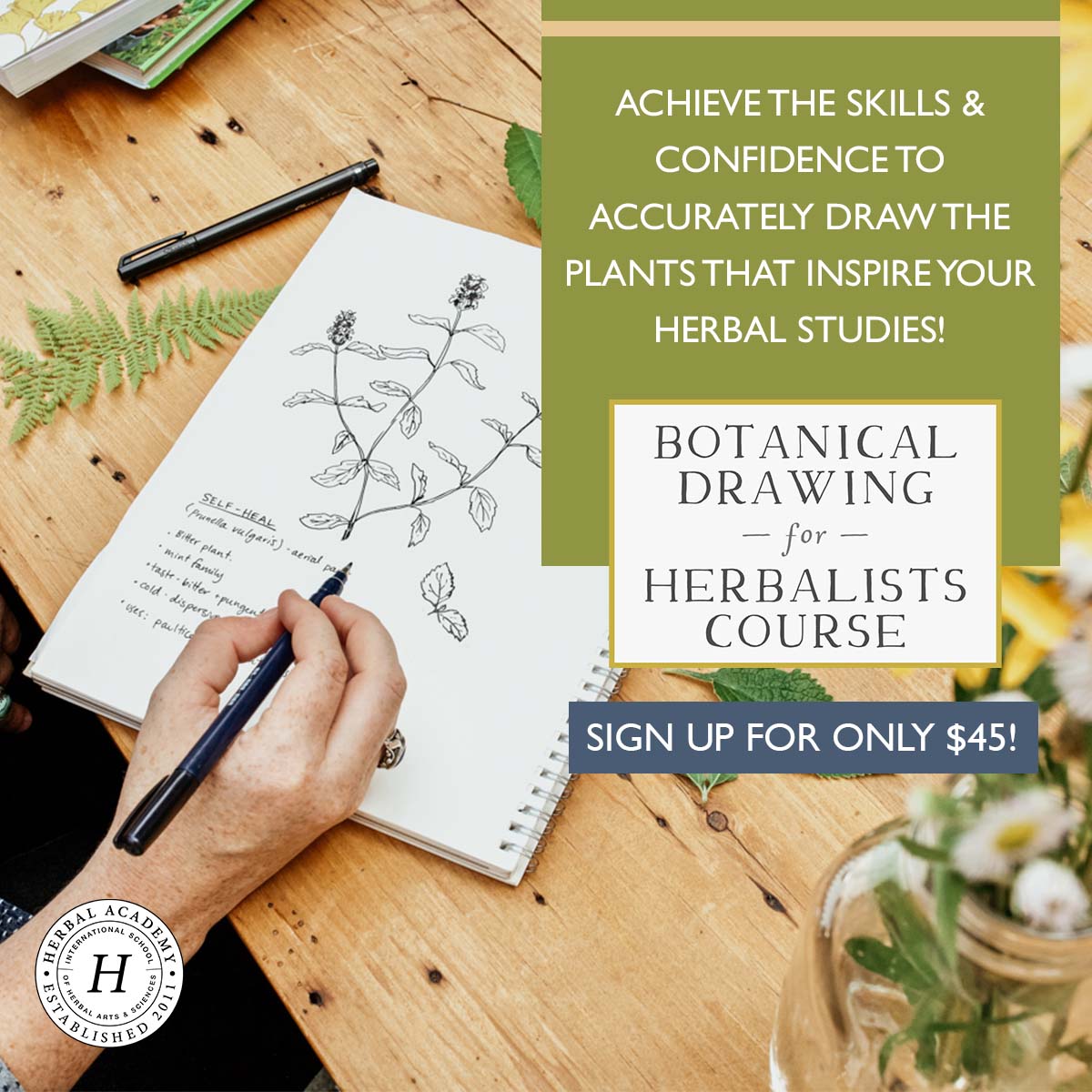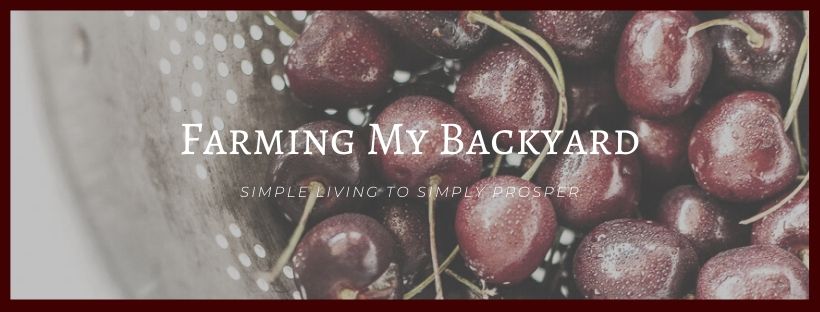Botanical drawing is a fun intersection of multiple interests. Using art to better appreciate the plants around us and learn more about them? Yes, please! Cute flower drawings sprinkled through my bullet journal? Absolutely!
I love to do quick little doodles, but it can be so much more rewarding to create something beautiful that is also useful. Botanical drawing is one way to do that.

As you sketch you are learning details about the plants you are drawing that you wouldn’t necessarily notice or remember.
It’s a great way to really dive deep into getting to know that plant, flower, fruit, or vegetable.
Drawings can add a vibrancy to your personal garden and herb records that make it something truly unique to you.
Plus it’s just plain fun!

Where To Learn Botanical Drawing
Depending on what you want to get out of your botanical drawing, there are different ways to approach learning how to do it. If you want something casual and fun, check out the internet. Want to expand your art knowledge or plant based knowledge? Books are a good resource. Want to go more in depth? Maybe try a class or course.
Botanical Doodles Online
There are some fun flower doodle tutorials online that are a fun way to dabble in some very basica botanical drawing. Diary of a Journal Planner has a lot of step by step line doodles available.
The first one of theirs I tried was the dandelion and it was easy and fun to draw.

There is also always the option of hitting Pinterest and searching “How to draw ____”. There’s usually a decent amount of results. You can click through to the posts or even just draw right from the images.

Look at Books on Botany And/Or Drawing
When I wanted to get a little more in depth than just fun doodles, I placed just about every book on hold at the library.
This resulted in a mega stack of giant books that took a lot of upper body strength to haul out to the car. But that’s a good problem!
Most of them were beautiful and interesting, but not really something that would help me improve my personal botanical drawing.
I managed to whittle the giant stack down to just five books to spend more time diving into.

Read Books About Plants
Two of these are more educational about plants than about the actual drawing. An Illustrated Catalog of American Fruits and Nuts: The US Department Of Agriculture Pomological Watercolor Collection is a giant tome full of gorgeous spreads of, well, watercolors of fruits and nuts.
Each chapter starts with fascinating information about the history of those particular types of fruit, specifically in America. For example, I never knew that cherry trees were brought to the United States by Eliza Scidmore, the first woman on the National Geographic Society board of trustees.
In 1885 she proposed planting a cherry forest in Washington DC, but it took until 1912 before Eliza Scidmore helped organize the planting of West Potomac Park with 2,000 cherry trees sent as a gift from Japan.

The (much) smaller book, Heirloom Fruits of America is selections from the same USDA Pomological Watercolor Collection. The illustrations are detailed and beautiful. It’s an inspiring book to see the large number of varieties of various fruits.

Read Books About Drawing
The other three books are much more focused on learning how to create your own botanical drawings and art.
Painting Watercolor Botanicals by Harriet De Winton has step by step instructions on how to paint several specific flowers and plants, including pages on what supplies you will need.

Botanical Line Drawing by Peggy Dean is exactly the type of book I was looking for in my original giant library stack. It’s step by step simple illustrations of specific plants. This is a great book to start with if you don’t feel like an artist or feel intimidated by starting out with botanical drawing.

Evening primroses pop up under our swing set every spring. I’d like to write down when they first appear each year and look for other phenological clues they may give me about when to plant. (Plus they’re beautiful.)
Botany For Artists by Elizabeth Leech goes much more in depth into the botanical information of specific plant parts. It’s intended to help artists create more realistic representations of plants in their art. But this is a great resource if you are wanting realistic botanical drawings to reference for your garden or herbal records.

Take A Drawing Course
Taking an art class is a great way to get some accountability and also some guidance on how to draw better. My teenage daughter takes community art classes that are available through our local college. They’re taught by actual art teachers at the school. I’ve seen her drawing skills increase dramatically through these classes.
There are also online drawing classes available online through platforms such as Masterclass, Skillshare, or Udemy. If you search online for “botanical drawings courses” you get at least 5 solid looking options.
One of my favorite providers of online courses, The Herbal Academy, offers a Botanical Drawing For Herbalists Course. The courses I have taken from them have always been high quality, easy to access, and very beneficial.
In the Botanical Drawing For Herbalists course you will experience the following:
● Discover drawing as a tool for meditation and as a gateway to fostering a deeper
relationship with plants.
● Become familiar with the various plant parts (and the terms used to describe them) so
you can render them accurately. We’re calling this botany for artists!
● Develop new skills for drawing plants, including blind drawing, contour drawing,
negative space, shading, and other helpful ways to simplify the drawing process.
● Learn how to assess, adjust, and refine your drawings.
● Start adding depth, dimension, detail, and color to your finished sketch.
● Put to practice our complete step-by-step process for making a complete botanical
illustration from start to finish.
For more detailed information about what is included in each lesson click here.

Just Draw!
Of course there’s the age old method of learning how to do something: just get out there and do it! Take a notebook and something to draw with to your garden and draw what you see. This is a calm and peaceful way to pass the time, and each time you do it your drawing skills improve!
Whether you need some help getting started with botanical drawings, or you just dive right in and teach yourself, it’s a fun and useful skill that helps you have greater appreciation for the beauty of your garden.
Related Posts:
How To Start A Beauty Garden: 23 Plants To Grow For Homemade Beauty Products
Everything You Need To Know About Yarrow
5 Reasons You Need To Learn About Herbs
How To Learn How To Wildcraft
Want To Raise Happy Chickens?
Subscribe for our newsletter and get the free email course Intro To Backyard Chickens as well as a free printable checklist to walk you through step by step!
